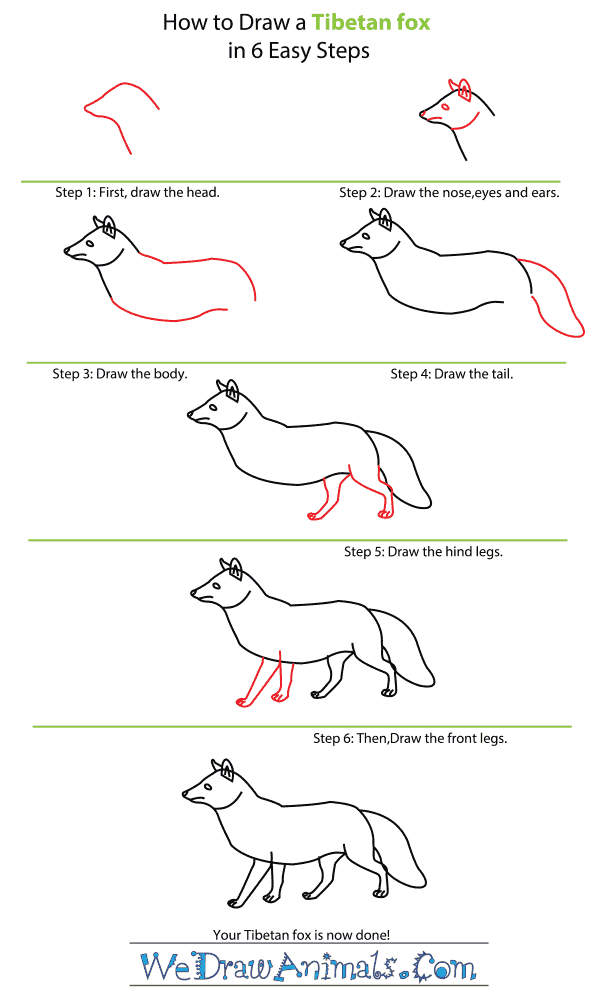In this quick tutorial you'll learn how to draw a Tibetan Fox in 6 easy steps - great for kids and novice artists.
The images above represent how your finished drawing is going to look and the steps involved.
Below are the individual steps - you can click on each one for a High Resolution printable PDF version.
At the bottom you can read some interesting facts about the Tibetan Fox.
Make sure you also check out any of the hundreds of drawing tutorials grouped by category.
How to Draw a Tibetan Fox - Step-by-Step Tutorial
Step 1: Let's begin our tibetan fox by drawing the head. Give him a long snout and make the line sink downwards.
Step 2: Now let's add details to the face. Draw two long ears, an oval for his eye, a line for his nose and a line for his mouth, and then a curved line for his jaw.
Step 3: Now we can draw his body. Simply connect his neck and leave a gap for his hind leg!
Step 4: Draw a wide, oval shape hanging low. This is the tibetan fox's bushy tail!
Step 5: Alright, now draw two separated hind legs - making them bigger at the top - and draw small paws at the base.
Step 6: Finally the front legs. Draw them less seperated and thinner than the hind legs.
Interesting Facts about the TIBETAN FOX
The Tibetan Fox is a member of the canine family and the scientific term for them is Vulpes ferrilata. Other common names for this animal are the Tibetan Sand Fox, the Sand Fox, the Corsac Fox, and the Ruppell’s Fox. This species lives in the cliffs and deserts of Nepal, China, Sikkim, and Bhutan. They have tan on top of their body and grey on the bottom, with short ears, bushy tails, and long canine teeth.
Did you know?
- The animal was first documented in the year 1842.
- They are almost 4 feet long.
- This species can be over 12 pounds in weight.
- They prefer altitudes of up to over 17,000 feet high.
- The animal can have 4 entrances to their home.
- They have entrances to their home not more than 10 inches wide.
The range of existence for this species is the Tibetan Plateau in western China and the Ladakh Plateau in northern Pakistan. They are mostly found in semi-arid to arid grasslands, very far from humans or from dense vegetation coverage. It inhabits upland plains and hills while hunting alone and eating rodents, rabbits, lizards, and animals that have already been dead.







